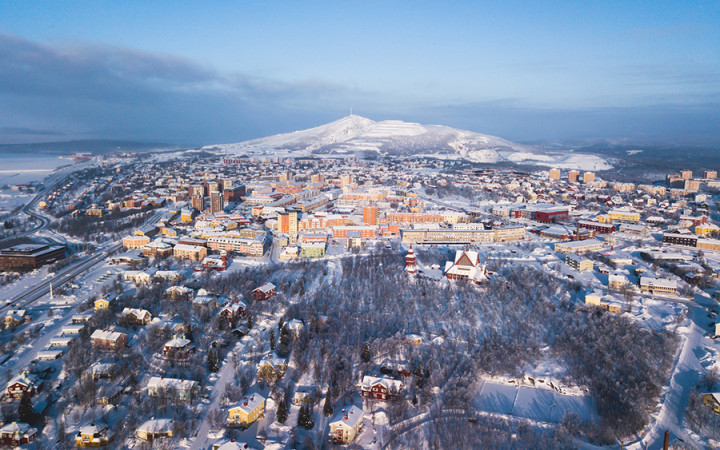Today’s Wonder of the Day was inspired by Cesar. Cesar Wonders, “How do you control moving?” Thanks for WONDERing with us, Cesar!
Have you lived in the same house in the same town for your whole life? Or have you moved at least once in your life, whether it's within the same town or to another city or state?
If you've ever been involved in a move, you know it can be a tough, stressful time. You have to pack up all your stuff, say goodbye to good friends, and then start over again in a new location.
As hard as it can be for one family to move from one house to another, can you imagine how difficult it would be to move an entire town? While the idea of moving an entire town might sound crazy, that's exactly what the residents of Kiruna, Sweden are experiencing.
The northernmost city in Sweden, Kiruna sits within the Arctic Circle and is home to about 18,000 residents. It sits on a hill above Europe's largest iron ore mine that's been around for over a century.
The mine was the reason Kiruna was formed, but now it's also the reason the city is moving. As the mine continues to , iron ore is now being removed from underneath the city's foundations.
Through a process called ground deformation, the ground underneath the city is slowly subsiding. Cracks have already appeared in the surface of the ground in parts of the city.
Fearing that large parts of the city will collapse in the coming decades, Luossavaara-Kiirunavaara AB (LKAB), the state-owned company that runs the mine, has promised over a billion dollars to move the city of Kiruna and its citizens about two miles farther east in the coming decades.
The move has already begun and will take place in stages. Those in the areas of Kiruna nearest the mine will be moved first. While most homes and buildings will be demolished and rebuilt in the new town (called New Kiruna), nearly two dozen historic buildings are being moved with special equipment to their new locations.
The slow, incremental nature of the move has led to a new nickname for Kiruna: "millipede town." People see the move as a slow process of hundreds of people and buildings gradually crawling a couple of miles east.
When the move is complete, LKAB plans to renovate abandoned areas of Kiruna into parks for recreation. To prepare for the day when the mine eventually shuts down, the town is also trying to boost its tourism industry. Given its location, the city features wonderful scenery and is a great place to see the Aurora Borealis.
As strange as it may seem for an entire city to be moved, it's far from the first time it's ever happened. In the past, other cities have been moved for a variety of reasons. For example, the town of Hibbing, Minnesota, was moved over two miles in 1919 to make way for an iron ore mine.
The town of Vidalia, Louisiana, was moved in 1938 to avoid future flooding of the Mississippi River, which significantly damaged the town when it flooded in 1927. In the late 1960s, the town of Valdez, Alaska, was moved several miles inland when it was discovered the town was built on unstable ground following an earthquake and tsunami that wiped out the town's waterfront.
Sometimes new building projects create problems that require towns to move. For example, large-scale dam projects sometimes flood areas where towns currently sit. The cities of Hill Village, New Hampshire, and Tallangatta, Australia, were moved due to the building or expansion of dam projects.
In the 1990s, the residents of Minor Lane Heights, Kentucky, struck a deal with a new airport being built. Because of noise concerns raised by the residents, the airport agreed to buy the entire town and move its residents to a newly-built town called Heritage Creek over five miles away.




